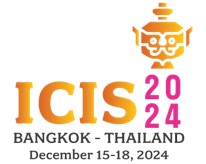Loading...
Paper Number
1783
Paper Type
Complete
Abstract
Continuous digital service innovation (CDSI) represents a shift toward flexible, iterative, bottom-up approaches to service innovation in today’s rapidly evolving technology-dominated service context. This new way of organizing for service innovation fosters an environment of continuous change and uncertainty, which is known to create paradoxical tensions. However, our understanding of the tensions inherent in CDSI and effective strategies for managing them remains limited. We address this gap by exploring the organizing tensions that surface as organizations organize for CDSI. We employ the paradox lens and combine existing literature with findings from two cases to identify three interrelated organizing tensions in CDSI: flexibility versus stability, autonomy versus control, and parts versus whole, and propose effective "both/and" strategies for managing these contradictory yet interrelated elements in organizations. We contribute to research and practice by advancing our understanding of the emerging CDSI phenomenon, its inherent tensions, and their effective management through paradoxical thinking.
Recommended Citation
Elo, Jenny; Tuunanen, Tuure; and Lyytinen, Kalle, "Organizing Tensions in Continuous Digital Service Innovation: A Multiple Case Study" (2024). ICIS 2024 Proceedings. 18.
https://aisel.aisnet.org/icis2024/diginnoventren/diginnoventren/18
Organizing Tensions in Continuous Digital Service Innovation: A Multiple Case Study
Continuous digital service innovation (CDSI) represents a shift toward flexible, iterative, bottom-up approaches to service innovation in today’s rapidly evolving technology-dominated service context. This new way of organizing for service innovation fosters an environment of continuous change and uncertainty, which is known to create paradoxical tensions. However, our understanding of the tensions inherent in CDSI and effective strategies for managing them remains limited. We address this gap by exploring the organizing tensions that surface as organizations organize for CDSI. We employ the paradox lens and combine existing literature with findings from two cases to identify three interrelated organizing tensions in CDSI: flexibility versus stability, autonomy versus control, and parts versus whole, and propose effective "both/and" strategies for managing these contradictory yet interrelated elements in organizations. We contribute to research and practice by advancing our understanding of the emerging CDSI phenomenon, its inherent tensions, and their effective management through paradoxical thinking.
When commenting on articles, please be friendly, welcoming, respectful and abide by the AIS eLibrary Discussion Thread Code of Conduct posted here.



Comments
14-DigitalInnovation